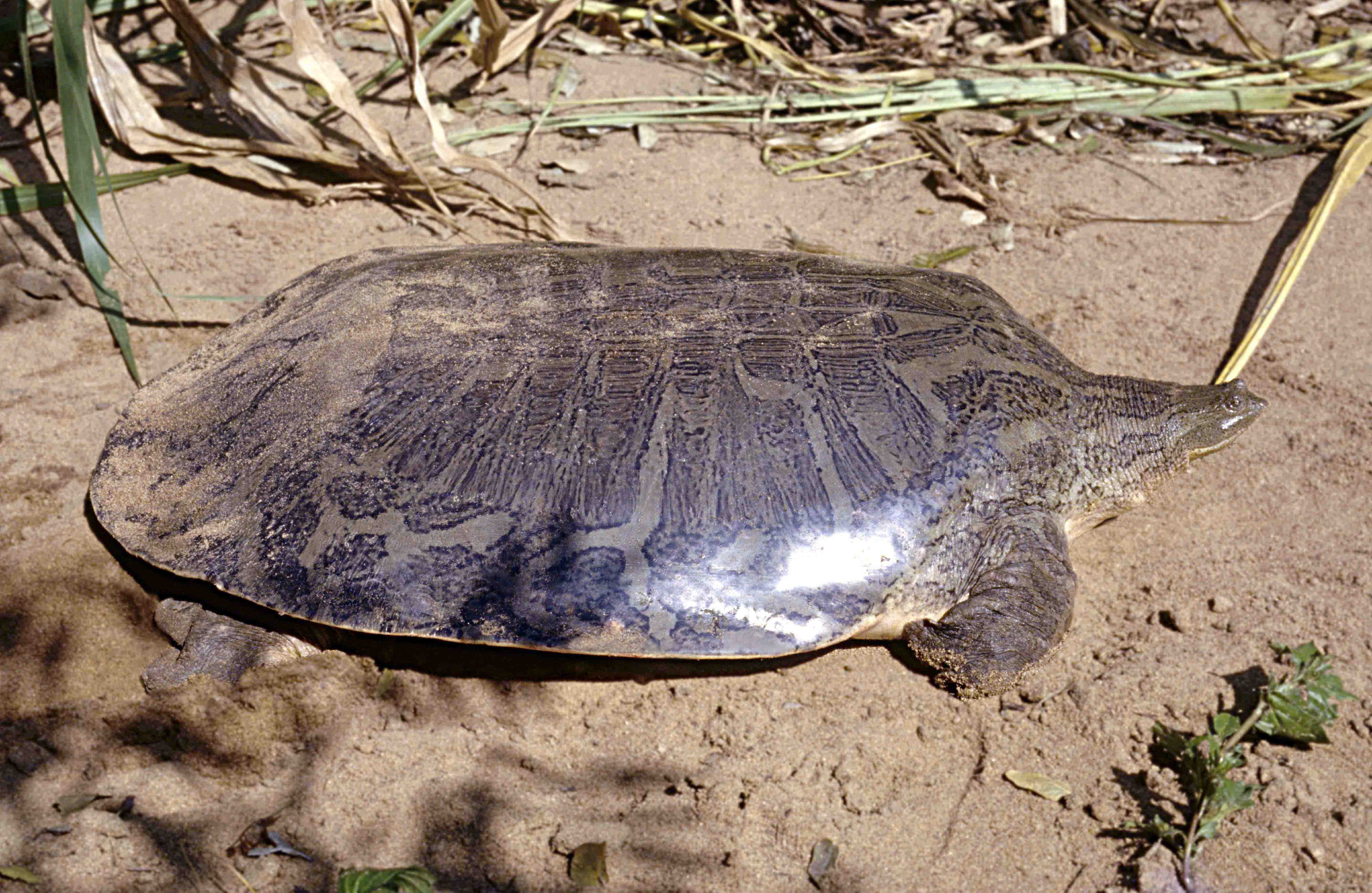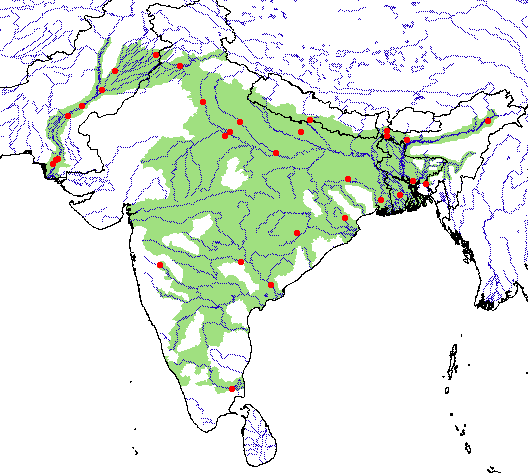Chitra indica, 027
Chitra indica (Gray 1830) –
Narrow-Headed Softshell Turtle
Indraneil Das1 and Shailendra Singh2
1Institute of Biodiversity and Environmental Conservation,
Universiti Malaysia Sarawak, 94300 Kota Samarahan, Sarawak, Malaysia
[[email protected]];
2Center for Herpetology, Madras Crocodile Bank Trust,
Post Bag 4, Mamallapuram 603 104, Tamil Nadu, India
[[email protected]]
Summary. – The narrow-headed softshell turtle, Chitra indica (Family Trionychidae), is an extremely large (total carapace length at least 110 cm), highly aquatic species. It is widely distributed on the Indian subcontinent. Fish, frog, crustaceans, and mollusks have been recorded as food, the species exhibiting a highly specialized morphology for ambush-feeding. A large clutch, comprising 65–193 eggs, 26.8 mm in mean diameter and 10.4 g in mean mass, is laid at the height of the monsoons in central India, while nesting in northern India, Bangladesh, and Nepal takes place during the low water season. Population sizes are unknown, but the species appears to be threatened by human exploitation and modifications of its riverine habitat.
Distribution. – Bangladesh, India, Nepal, Pakistan. Distributed in the Indian subcontinent from Pakistan through India to Bangladesh.
Synonymy. – Trionyx indicus Gray 1830, Trionyx aegyptiacus indica, Chitra indica, Gymnopus indicus, Aspidonectes indicus, Gymnopus lineatus Duméril and Bibron 1835, Trionyx lineatus.
Subspecies . – None recognized.
Status. – IUCN 2008 Red List: Endangered (EN A1cd+2cd) (assessed 2000); CITES: Appendix II; Indian Wildlife (Protection) Act: Schedule II; Pakistan: Wildlife Protection Act: Schedule III.
Citation:
Das, I. and Singh, S. 2009. Chitra indica (Gray 1830) – narrow-headed softshell turtle. In: Rhodin, A.G.J., Pritchard, P.C.H., van Dijk, P.P., Saumure, R.A., Buhlmann, K.A., Iverson, J.B., and Mittermeier, R.A. (Eds.). Conservation Biology of Freshwater Turtles and Tortoises: A Compilation Project of the IUCN/SSC Tortoise and Freshwater Turtle Specialist Group. Chelonian Research Monographs No. 5, pp. 027.1-027.7, doi:10.3854/crm.5.027.indica.v1.2009, //iucn-tftsg.org/cbftt/.
(Adobe Acrobat 6.0 or later required)

Chitra indica, Chambal River, Rajasthan, India.
Photo by Shekar Dattatri.
Distribution:

Distribution of Chitra indica in the Indian subcontinent. Red points = museum and literature occurrence records based on Iverson (1992) plus more recent and authors’ data; green shading = projected distribution based on GIS-defined hydrologic unit compartments (HUCs) constructed around verified localities and then adding HUCs that connect known point localities in the same watershed or physiographic region, and similar habitats and elevations as verified HUCs (Buhlmann et al., in press), and adjusted based on authors’ data.








